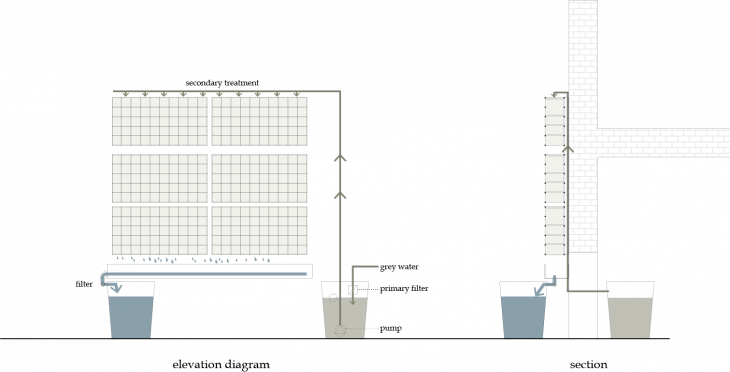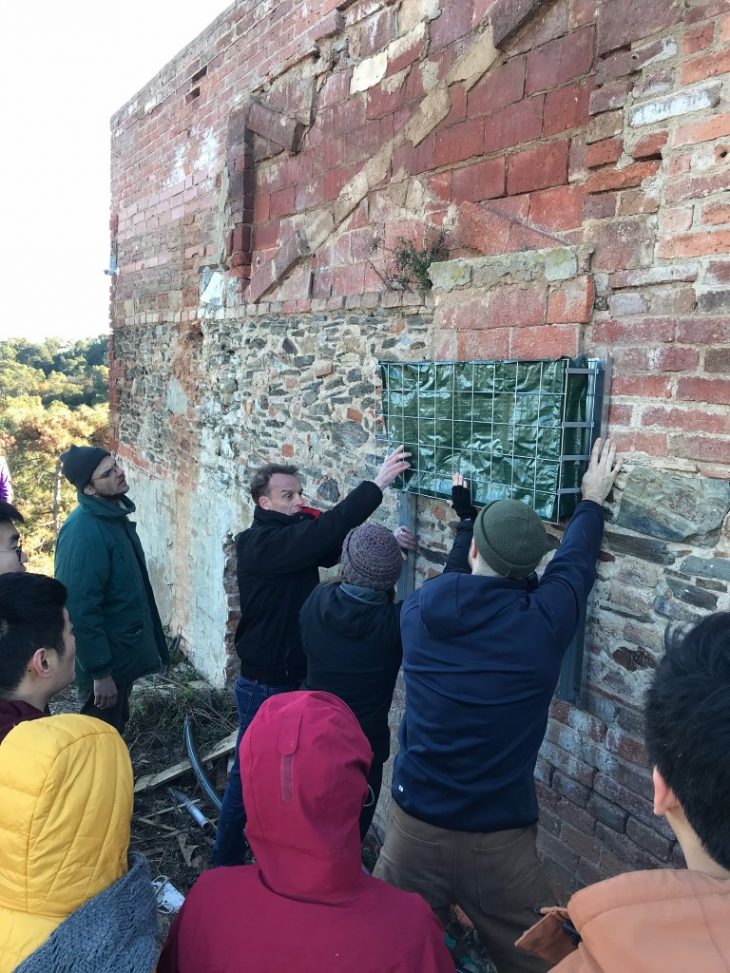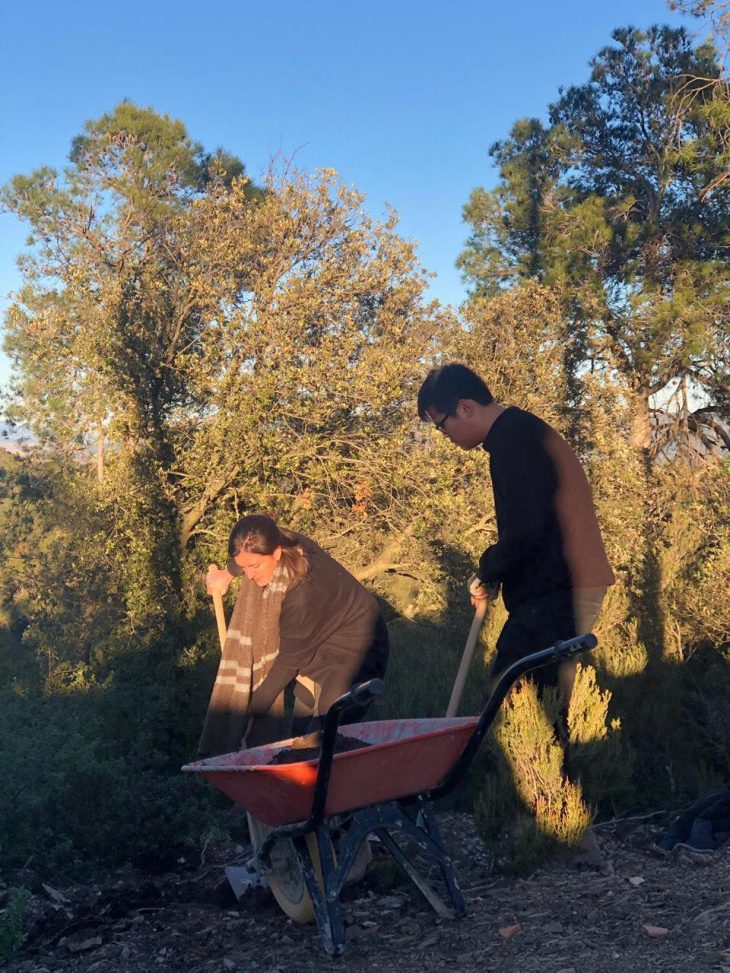The Babylon system

Water is not only cheap and basic for people’s livelihood but also expensive and takes lots of effort to be treated. In this workshop, we learn the water cycle of a city, focusing on the wastewater treatment which we build a prototype to show and understand.
3 basic steps of NBS wastewater treatment
Basically, waste water need to be treated in three stage: primary treatment which is mainly separating solids from liquids, secondary treatment which remove the organic matter of the grey water, and tertiary treatment which remove nutrients such as nitrogen and phosphorus. In Babylon system, we simply do the first and secondary treatment which is good enough for irrigation but not for kitchen. The tertiary treatment is possible to build in Babylon system but does not match the cost.
Babylon system treatment
The Babylon system we built is connected to the exist grey water pipe with a container where a simple filler is installed as the first treatment. Then a pump will transmit the water to the top of the two of six standard panels where the secondary treatment take place. After going through the panels (three panel as the basic unit) in about 4 hours, the water was filler by the soil and bacterial in the soil. And then, treated water drip on the gutter which transmit the water through another filler for taking out soil and leaf to a container. Finally, we can have the water ready for irrigation usage. The whole system can treat 60 Liter of grey water with 3 square meter “soil wall” per day .

Installation of the wall
The Babylon system is installed at the north façade of the basement floor of Valldaura where most pipes pass by. We use gecko for connecting the Babylon system to the existed brick wall, and then connect the grey water from some of the shower places and sinks. Since the first container is indoor, we add a float system controlling the input of water to avoid flooding.

Mix the soil

To find the right soil for filler, we mixed the soil found near our house. We try different ingredients to meet the goal that 80-90% of the water should pass through the soil. First, we use only organic soil in the testament, and find out the organic have remain too much water in the soil itself which means this proportion of soil will work too slow. Second, we mixed some sand to the organic soil, and the result is that the water drip too slow like the system is blocked. We assume that the sand we took might contain clay which has too small particles. Then, we try to mix the organic soil with other ingredient like sand and stone, but the result is the same. So we doubt that the organic soil might contain compost making the soil too sticky after several times of filler. After that, we try another organic soil which seems to have more fiber. The result is perfect, but this organic soil is not from nearby. So we move on to dig soil on the ground where the soil seems friable and mix it with the fiber of pine leaf. Finally we find that the mixture of 50% friable soil and 50% of fiber is perfectly what we want. For experiment, we make one of the units with the perfect soil we find, and use another mixed which consist of 50% rock and 50% friable soil.

